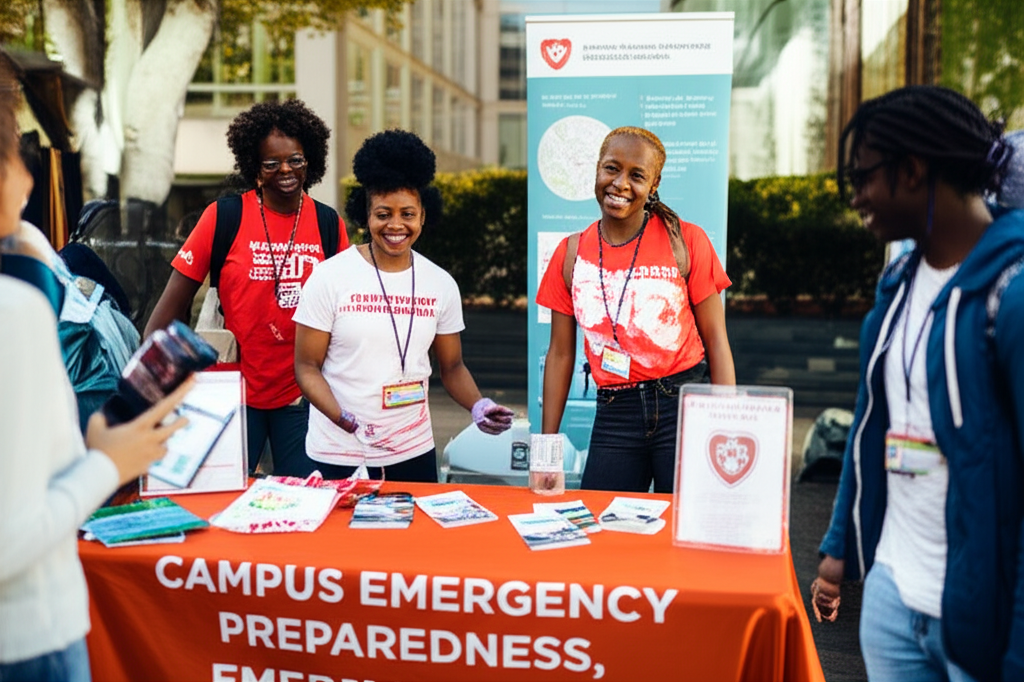Critical Need
Recent campus emergencies have highlighted gaps in disaster preparedness, with 67% of colleges reporting they are not fully prepared for major emergencies according to a 2023 campus safety survey.
Step 1: Comprehensive Risk Assessment
The foundation of effective disaster preparedness is understanding the specific risks your campus faces based on geographic location, campus layout, and student population characteristics.
Key Risk Categories to Assess
- **Natural disasters:** Earthquakes, hurricanes, tornadoes, floods, wildfires
- **Security threats:** Active shooter situations, bomb threats, terrorism
- **Health emergencies:** Disease outbreaks, chemical spills, food poisoning
- **Infrastructure failures:** Power outages, water system failures, building collapses
- **Cyber threats:** Data breaches, system failures, ransomware attacks
"You can't prepare for everything, but you can prepare for the most likely scenarios your campus will face. Risk assessment helps you prioritize your limited resources effectively."
— Dr. Lisa Park, Campus Safety Consultant and Former Emergency Management Director
Step 2: Develop Multi-Hazard Emergency Plans
Create comprehensive emergency response plans that address multiple types of disasters while maintaining flexibility for unexpected scenarios.
Essential Emergency Plan Components
| Component | Description | Key Personnel | Update Frequency |
|---|---|---|---|
| Command Structure | Clear chain of command and decision-making authority | President, Safety Director | Annually |
| Communication Plan | How to alert and inform campus community | Communications Team | Semester |
| Evacuation Procedures | Safe routes and assembly points | Facilities, Security | Annually |
| Shelter Protocols | Where and how to shelter in place | Residence Life, Facilities | Annually |
| Recovery Planning | Post-emergency restoration procedures | All Departments | Annually |
Core elements of comprehensive campus emergency planning
Step 3: Implement Robust Communication Systems
Effective emergency communication can save lives by ensuring rapid, accurate information reaches all campus community members through multiple channels.
Multi-Channel Communication Strategy
- **Emergency alert system:** Text messages, emails, and phone calls
- **Public address systems:** Campus-wide speakers and building announcements
- **Digital signage:** Electronic displays throughout campus
- **Social media:** Official accounts for real-time updates
- **Website updates:** Dedicated emergency information pages
- **Mobile apps:** Campus-specific emergency notification apps
Communication Best Practice
The most effective emergency communication systems can reach 95% of the campus community within 15 minutes using multiple redundant channels.
Step 4: Conduct Regular Training and Drills
Regular practice ensures that when a real emergency occurs, everyone knows their role and can respond quickly and effectively.
Recommended Training Schedule
| Training Type | Frequency | Participants | Duration |
|---|---|---|---|
| Fire evacuation drills | Monthly | All building occupants | 15-30 minutes |
| Severe weather drills | Semester | Campus community | 20-45 minutes |
| Active shooter training | Annually | Faculty and staff | 2-4 hours |
| Emergency response team exercises | Quarterly | Response personnel | 4-8 hours |
| Campus-wide emergency simulation | Annually | Entire campus | Half day |
Comprehensive training ensures preparedness across all emergency scenarios
Step 5: Build Community Partnerships
Effective disaster response requires coordination with local emergency services, government agencies, and community organizations.
Essential Community Partners
- **Local police and fire departments:** First responder coordination
- **Emergency management agencies:** Regional disaster planning
- **Hospitals and medical facilities:** Mass casualty response
- **Red Cross and relief organizations:** Shelter and support services
- **Utility companies:** Infrastructure restoration priorities
- **Neighboring institutions:** Mutual aid agreements
Technology Integration
Modern disaster preparedness increasingly relies on technology solutions to enhance response capabilities and coordination.
Technology Solutions
Advanced emergency management platforms can integrate weather monitoring, threat detection, communication systems, and resource tracking into a single dashboard for emergency coordinators.
Measuring Preparedness Effectiveness
Regular assessment and improvement of disaster preparedness plans ensures they remain current and effective.
Preparedness Assessment Metrics
- Response time to emergency notifications
- Percentage of community reached by alert systems
- Evacuation completion times during drills
- Staff and student knowledge of emergency procedures
- Coordination effectiveness with external partners
- Post-incident recovery time and effectiveness
Budget Considerations
Effective disaster preparedness requires ongoing investment, but the costs are minimal compared to potential losses from inadequate preparation.
Investment Perspective
Universities typically spend 0.5-2% of their annual budget on emergency preparedness, but a single major incident can cost 10-50 times that amount in damages, liability, and lost operations.
